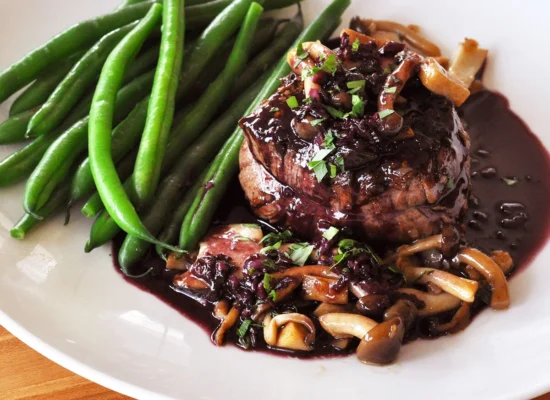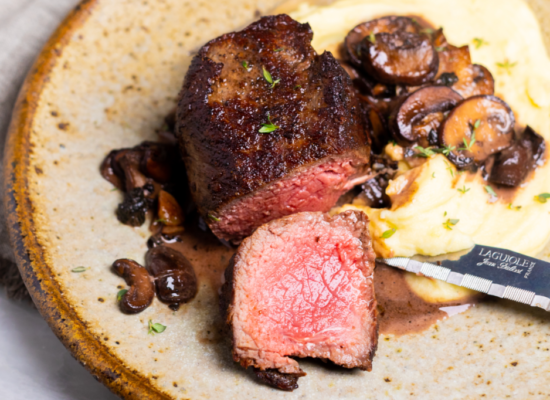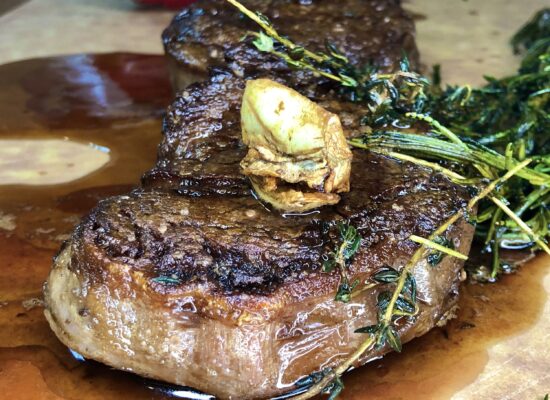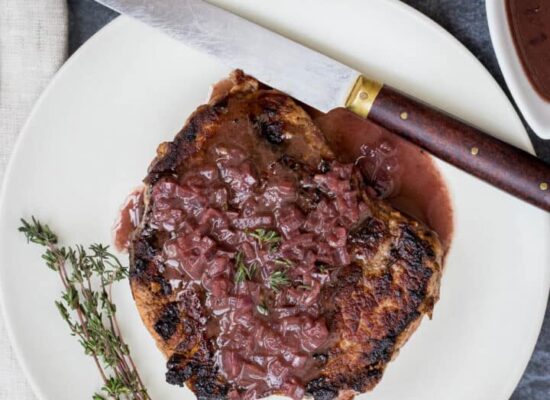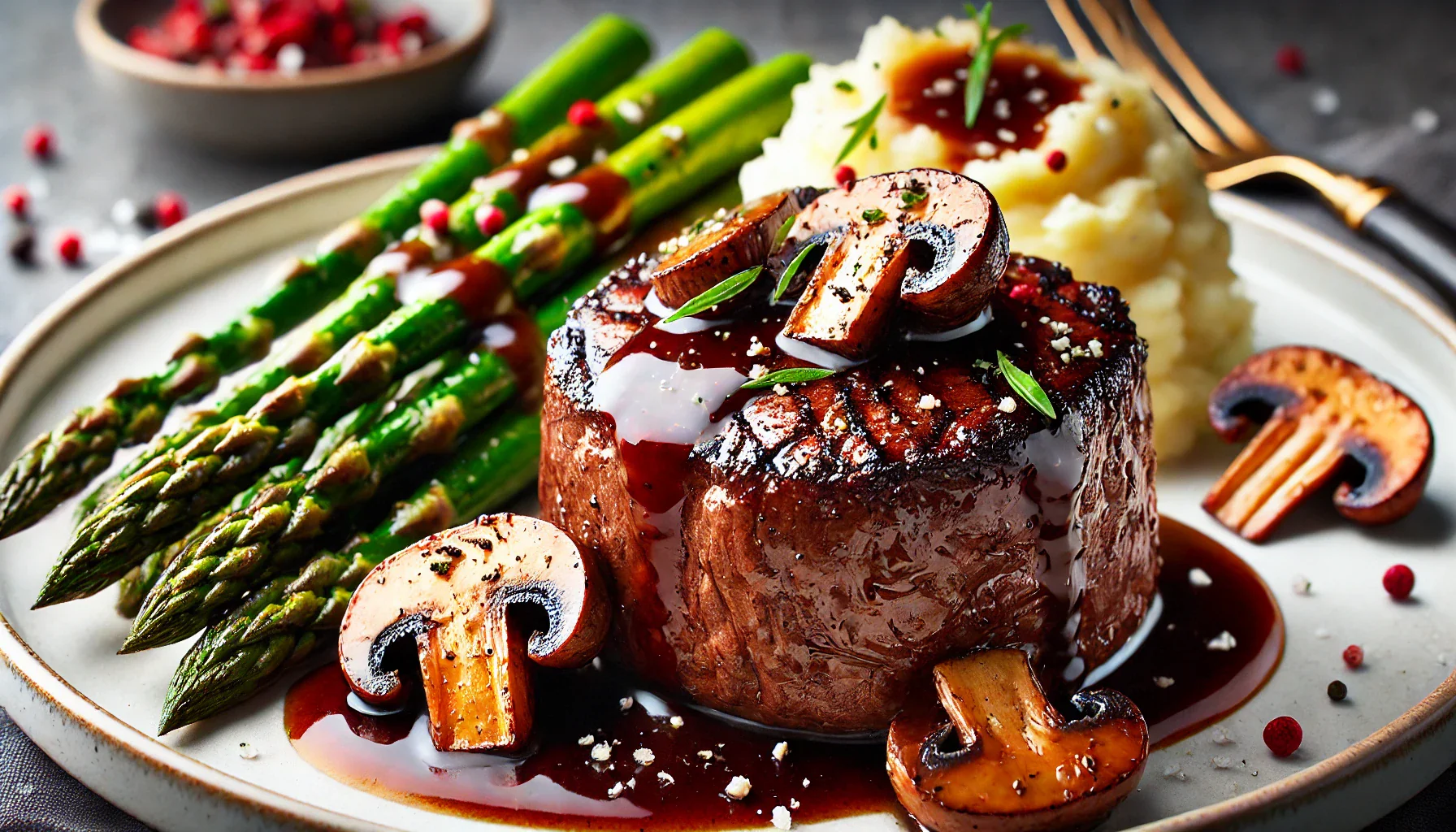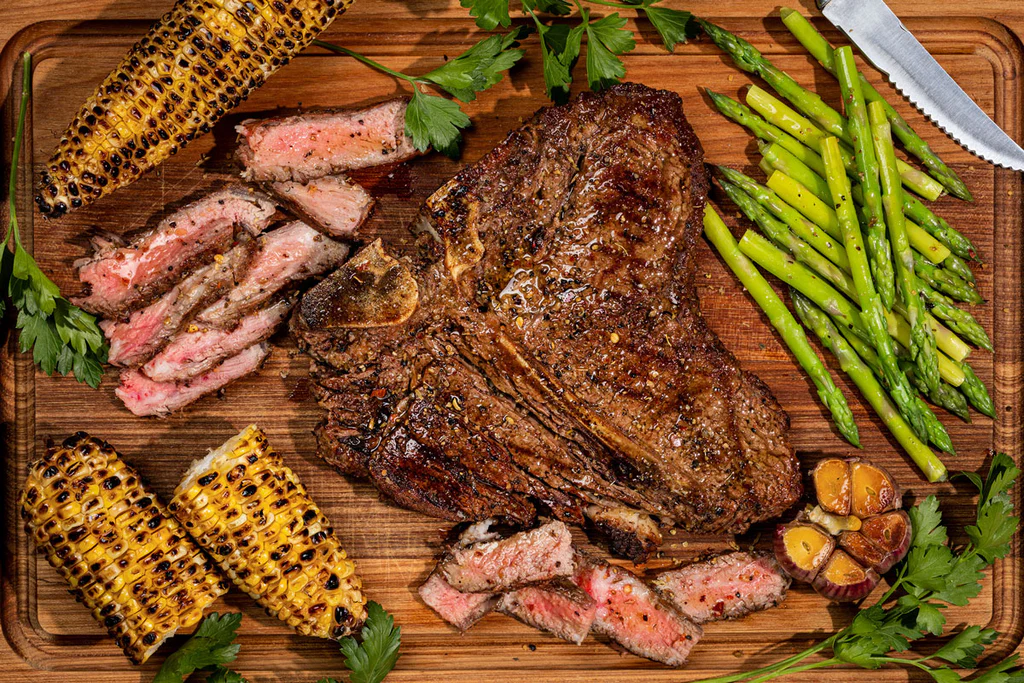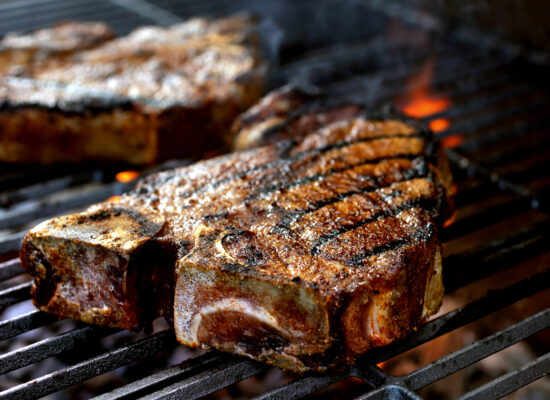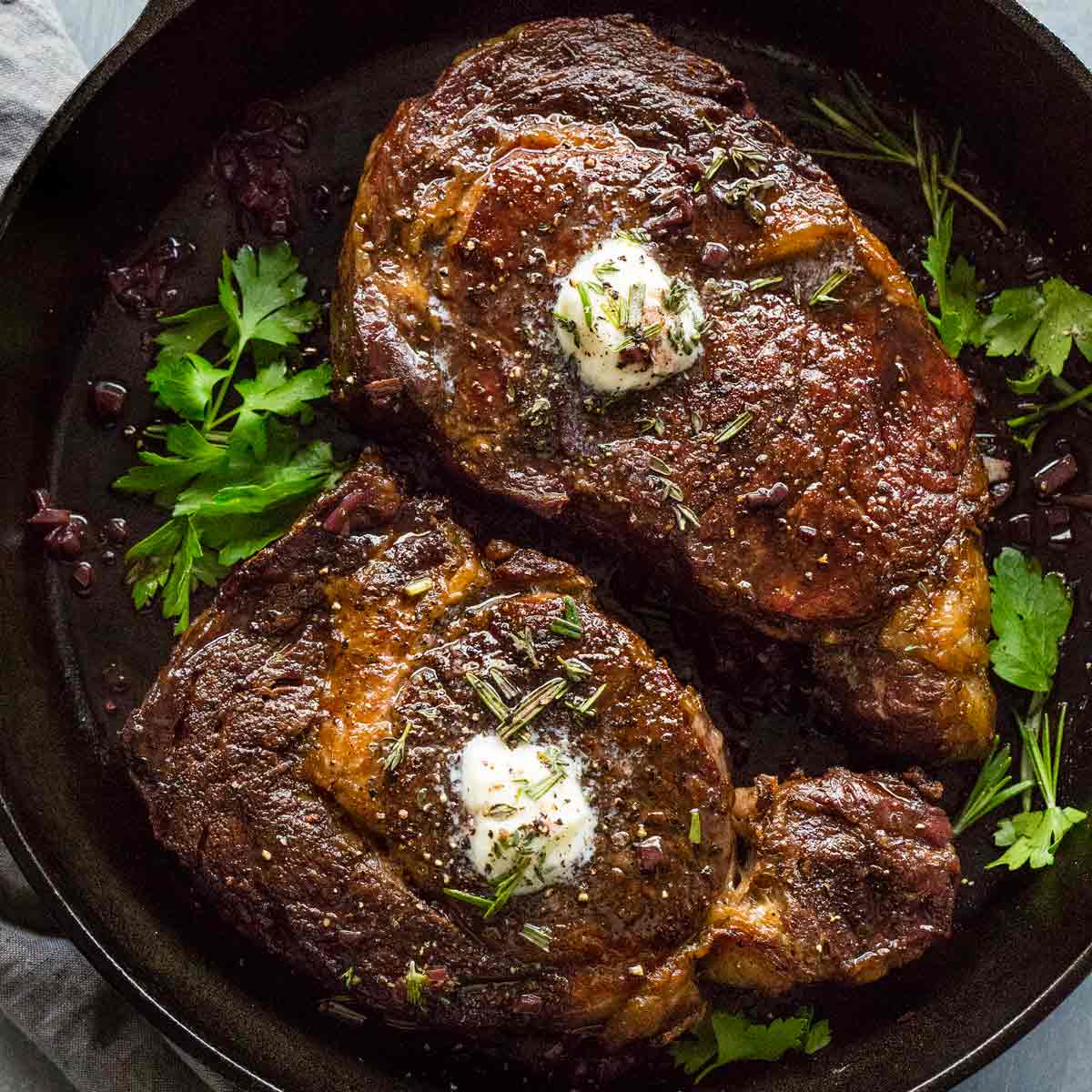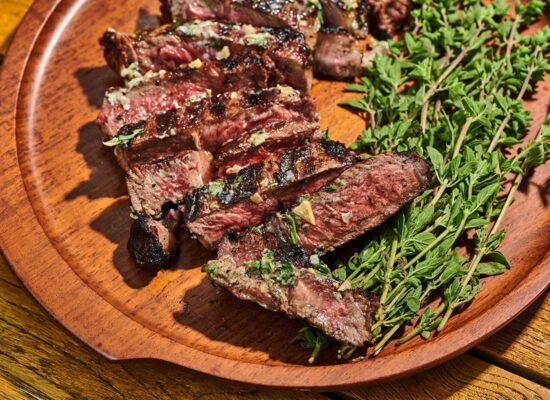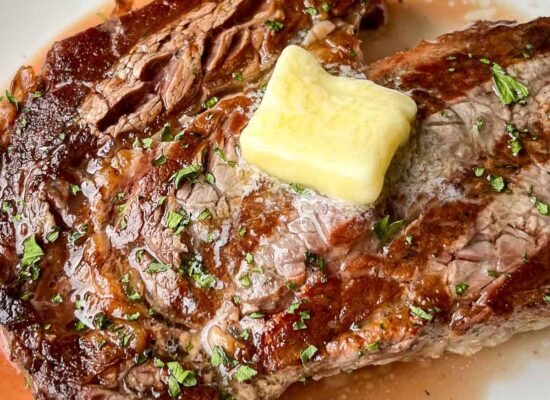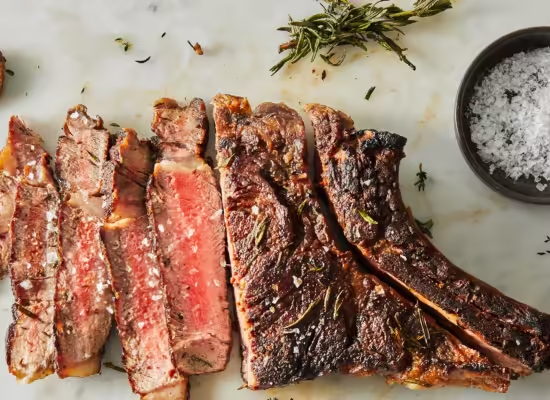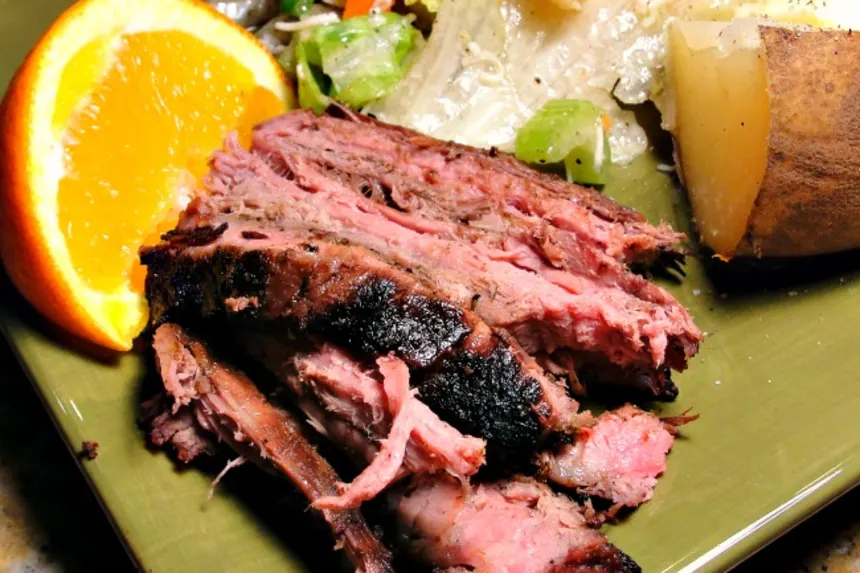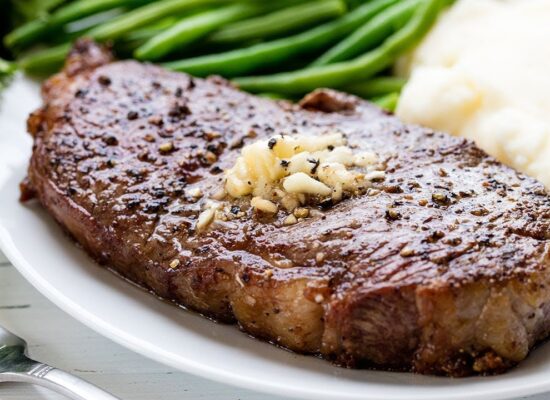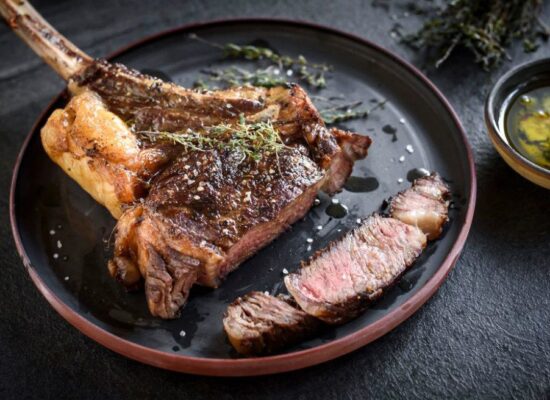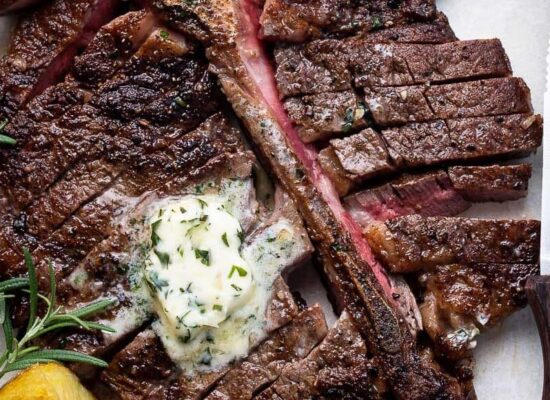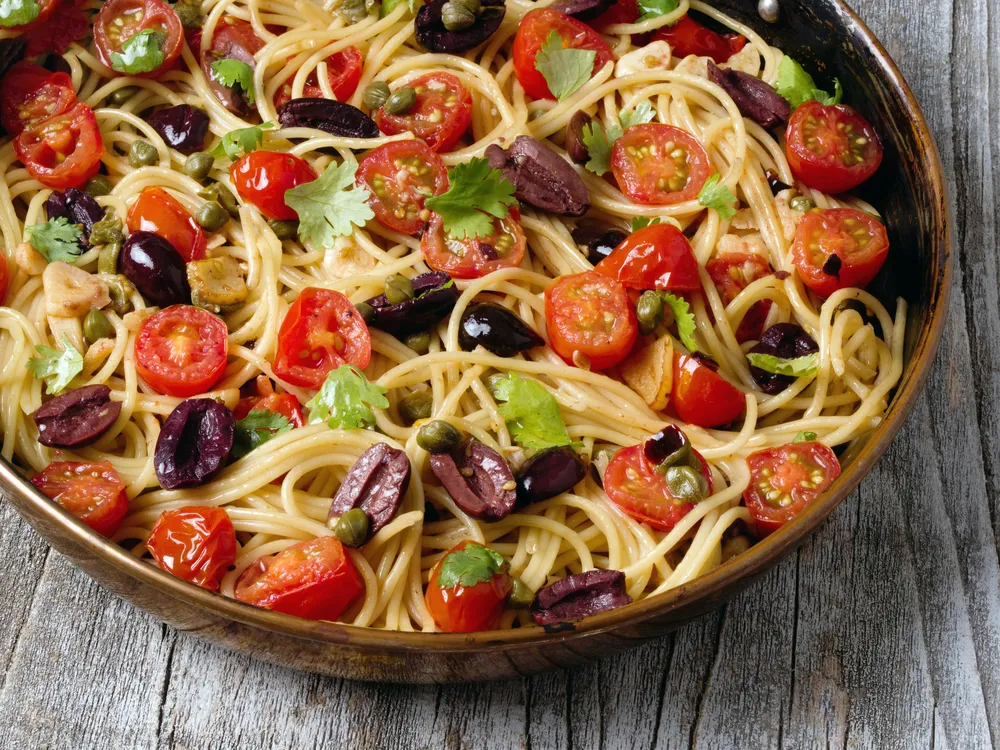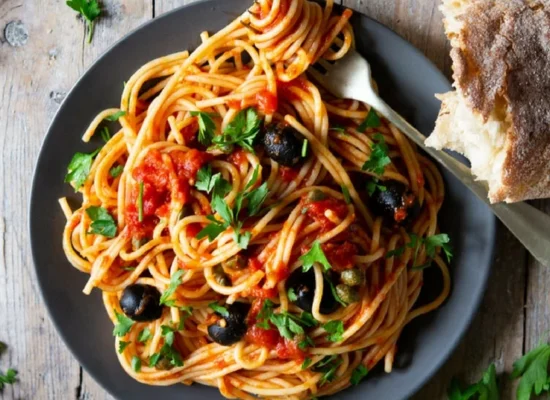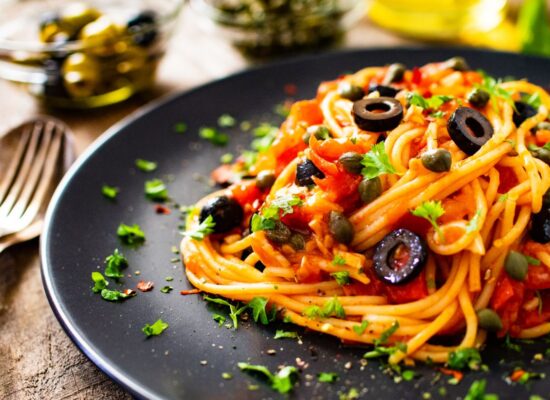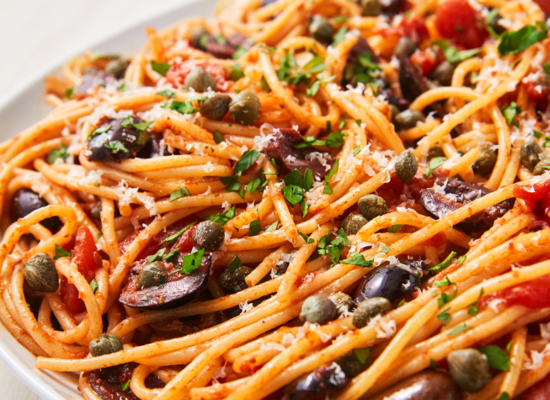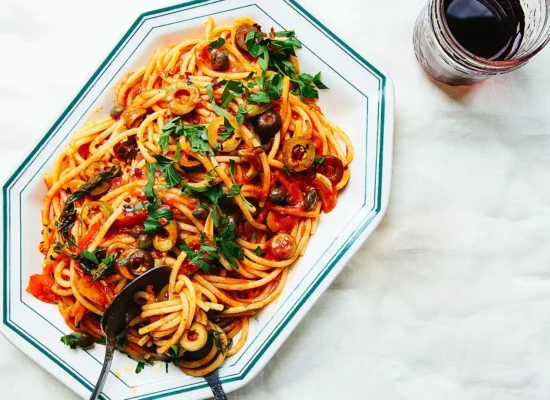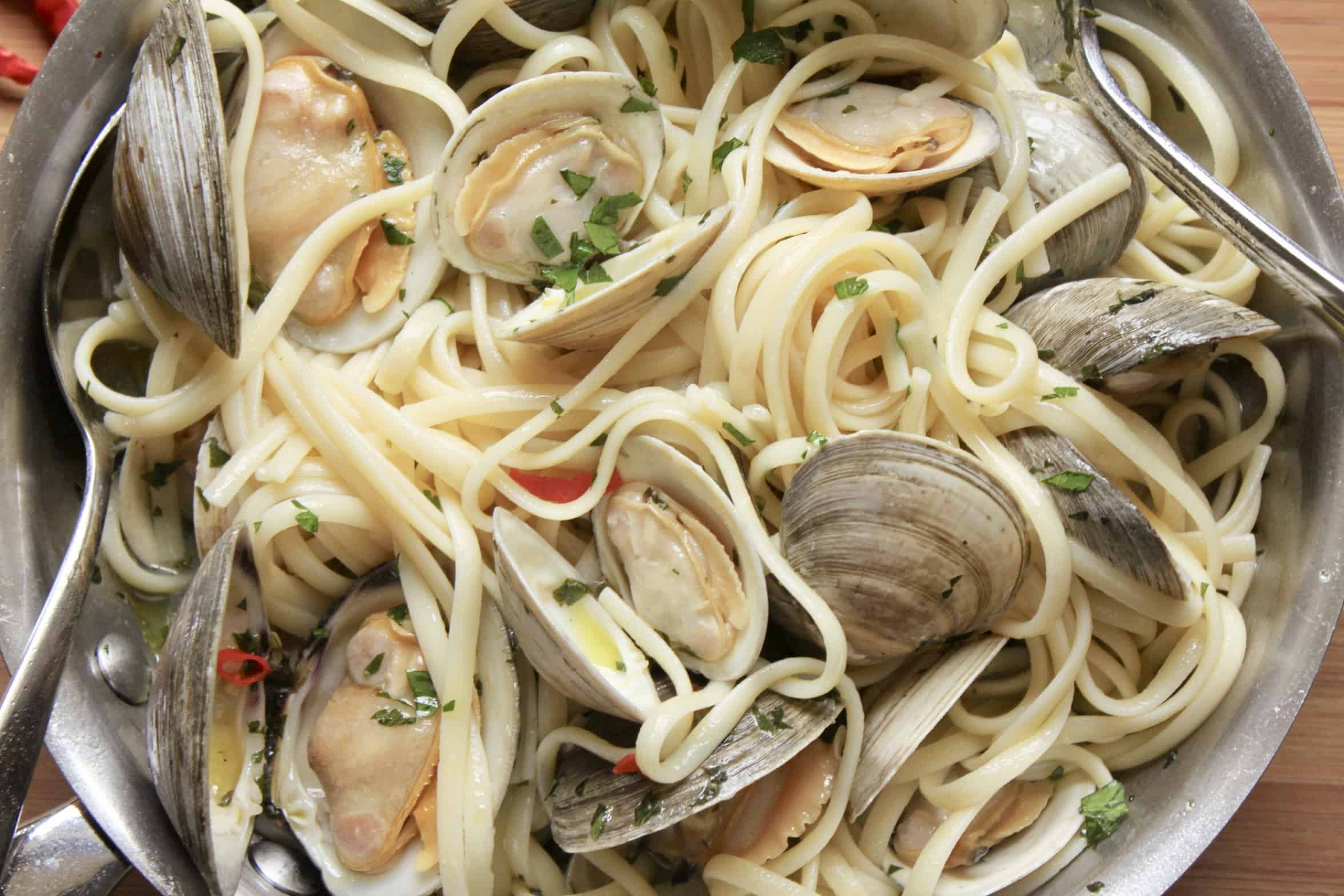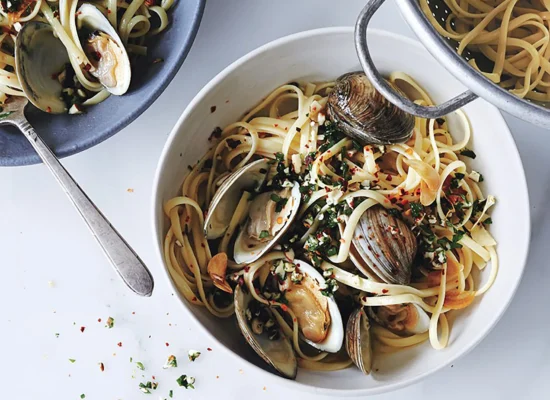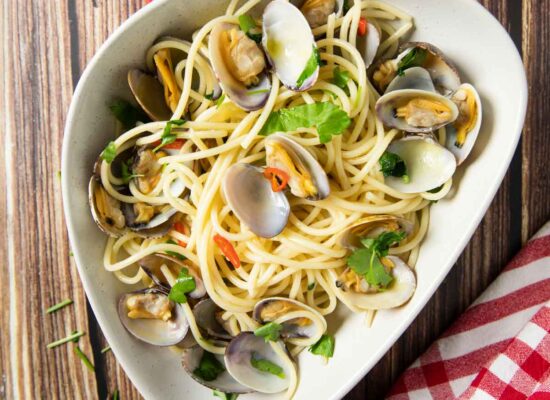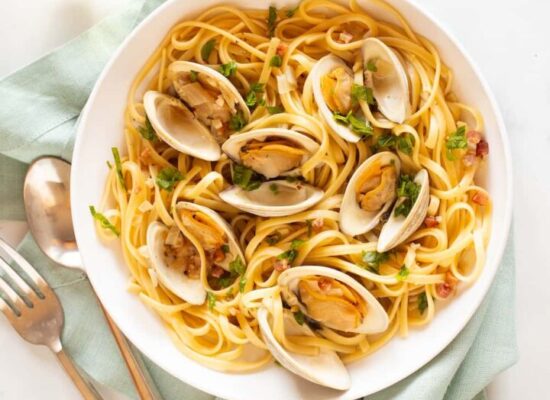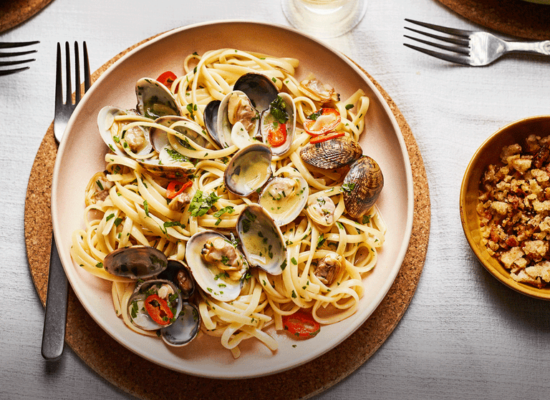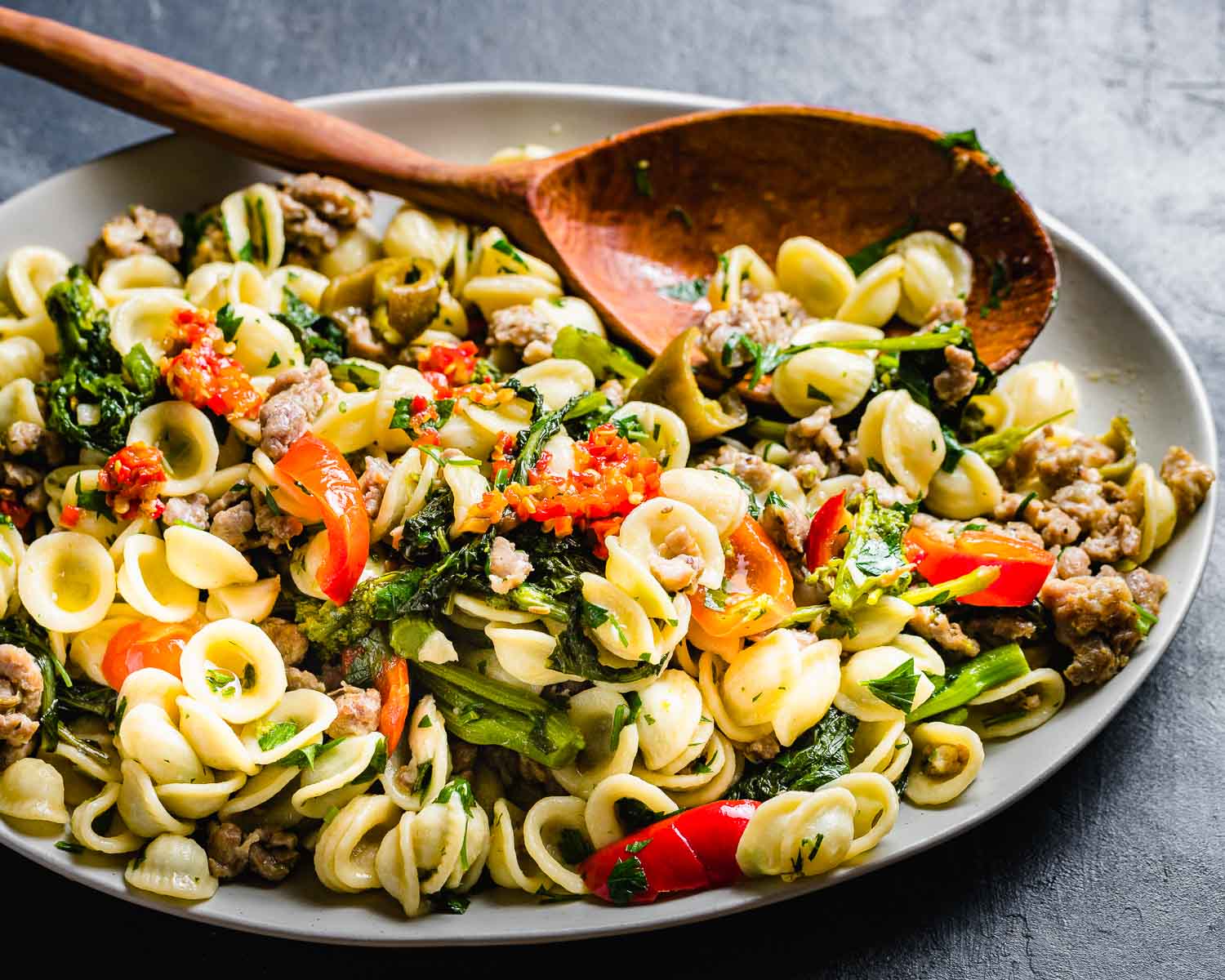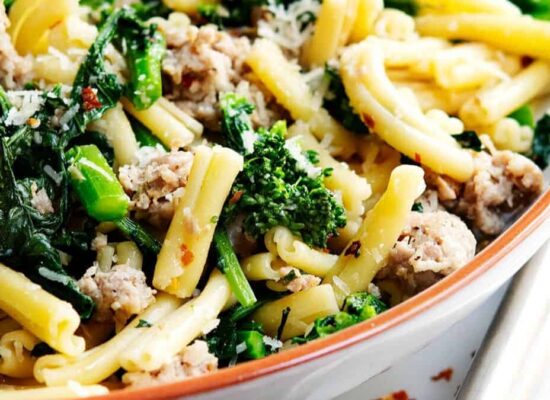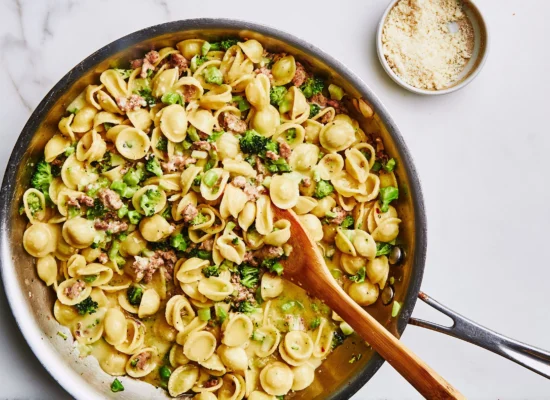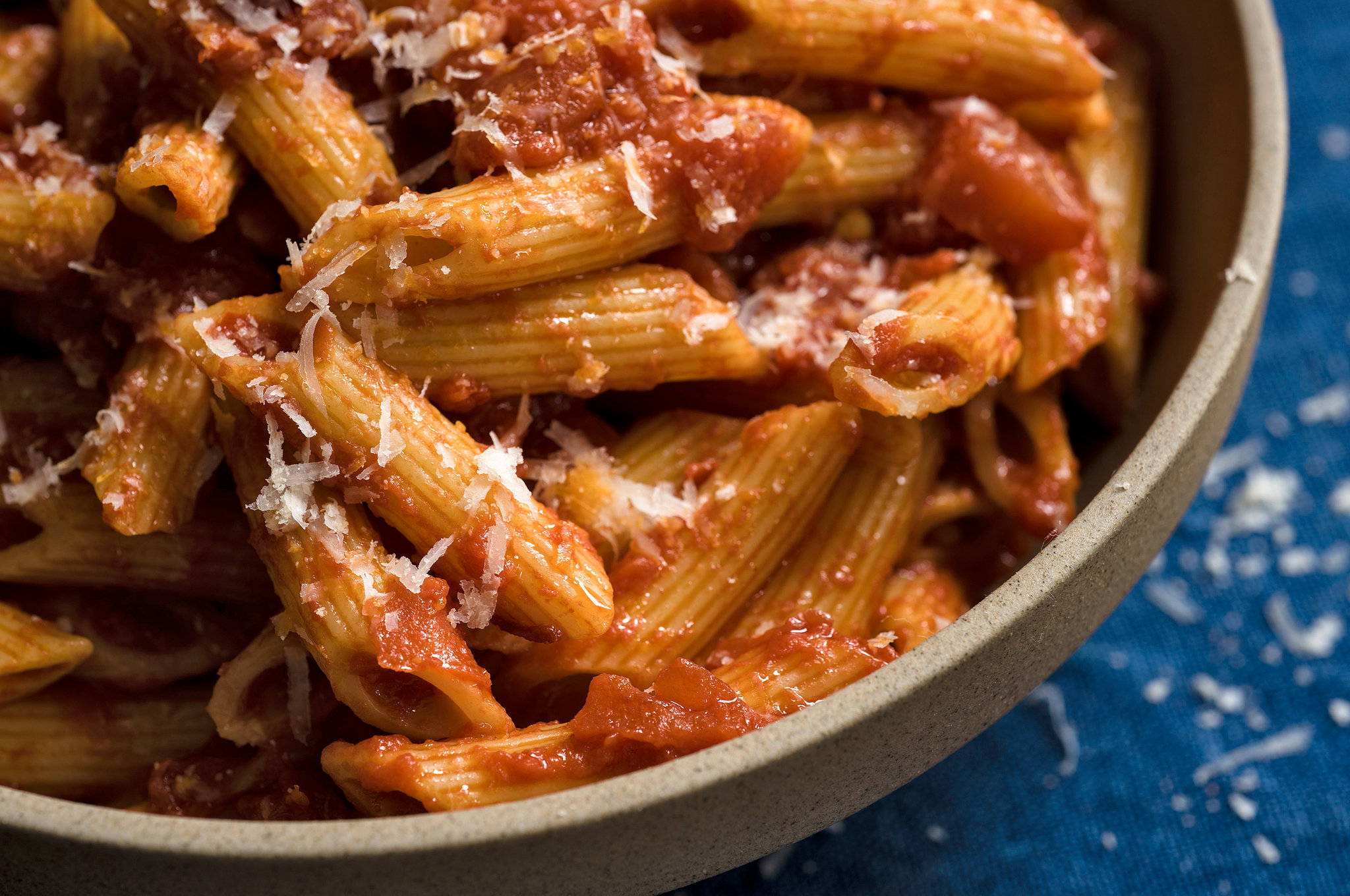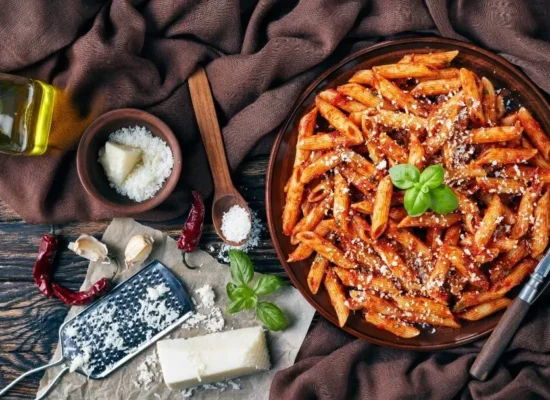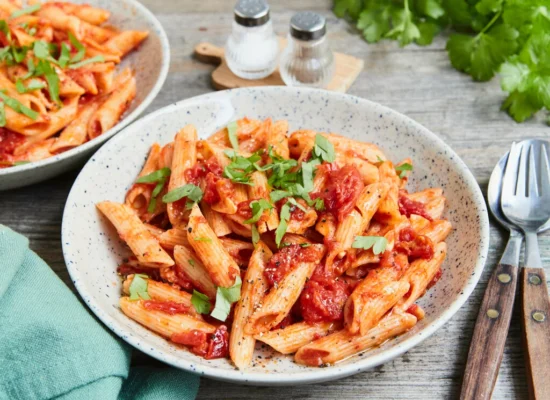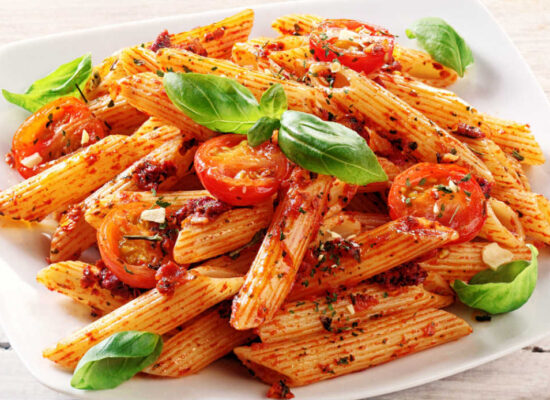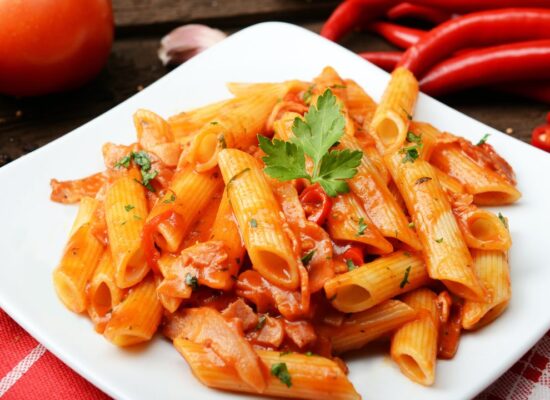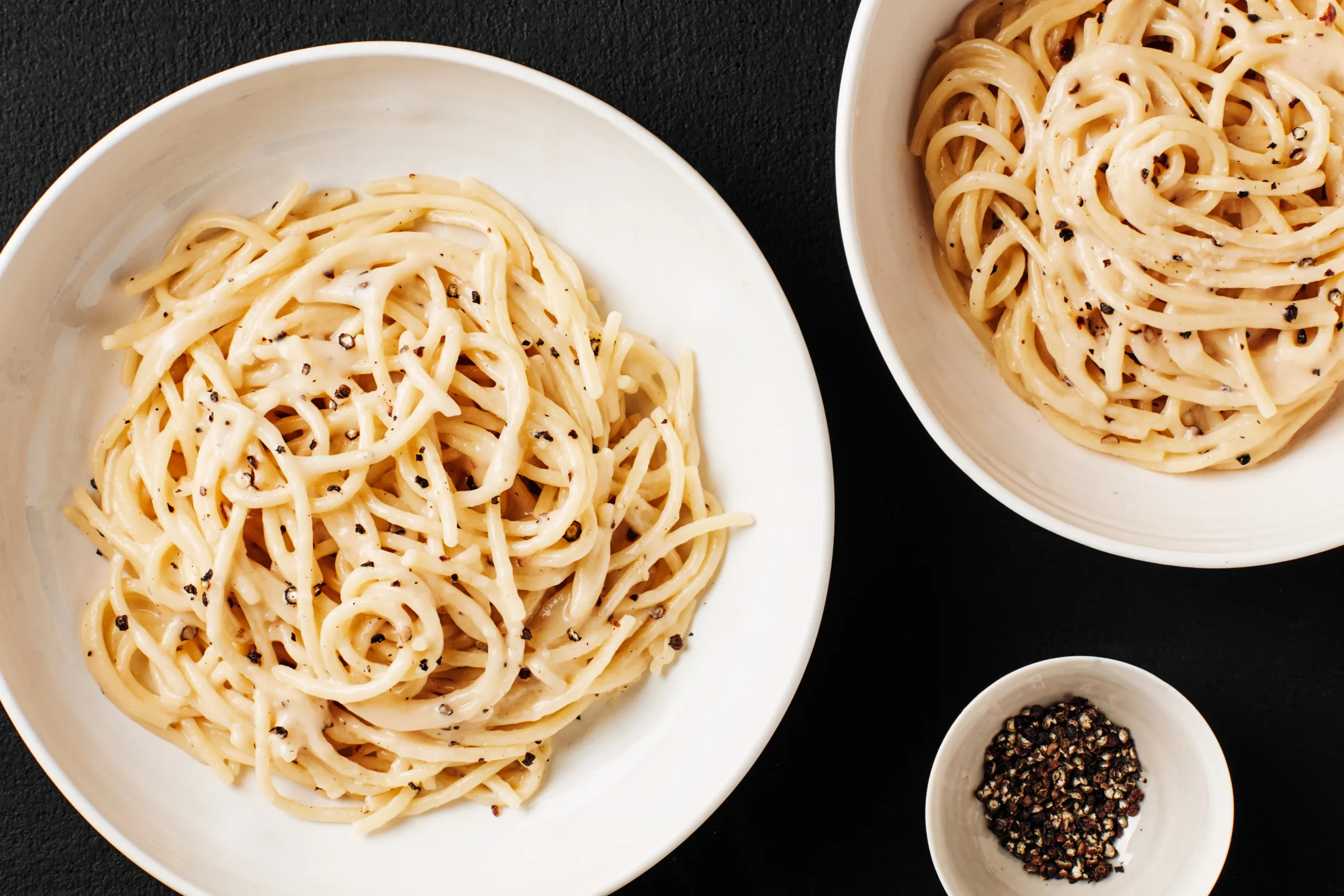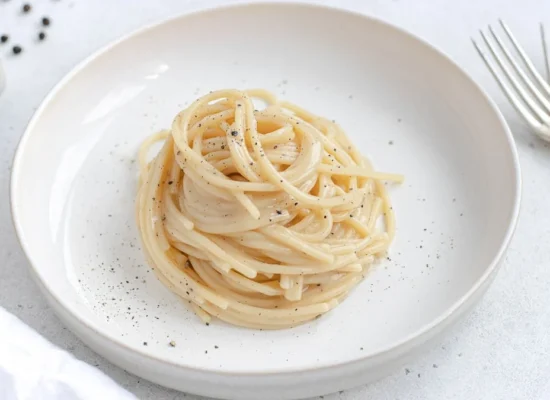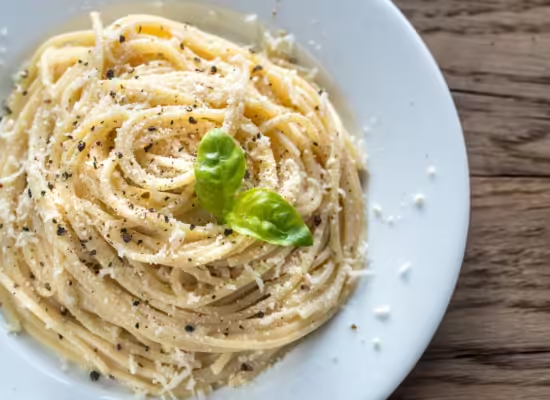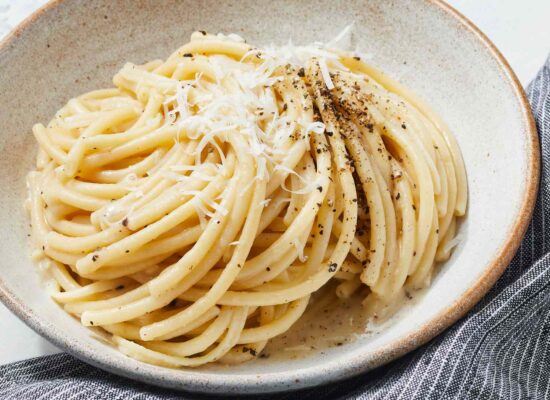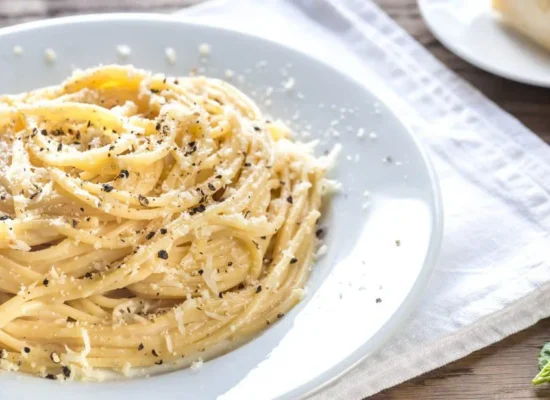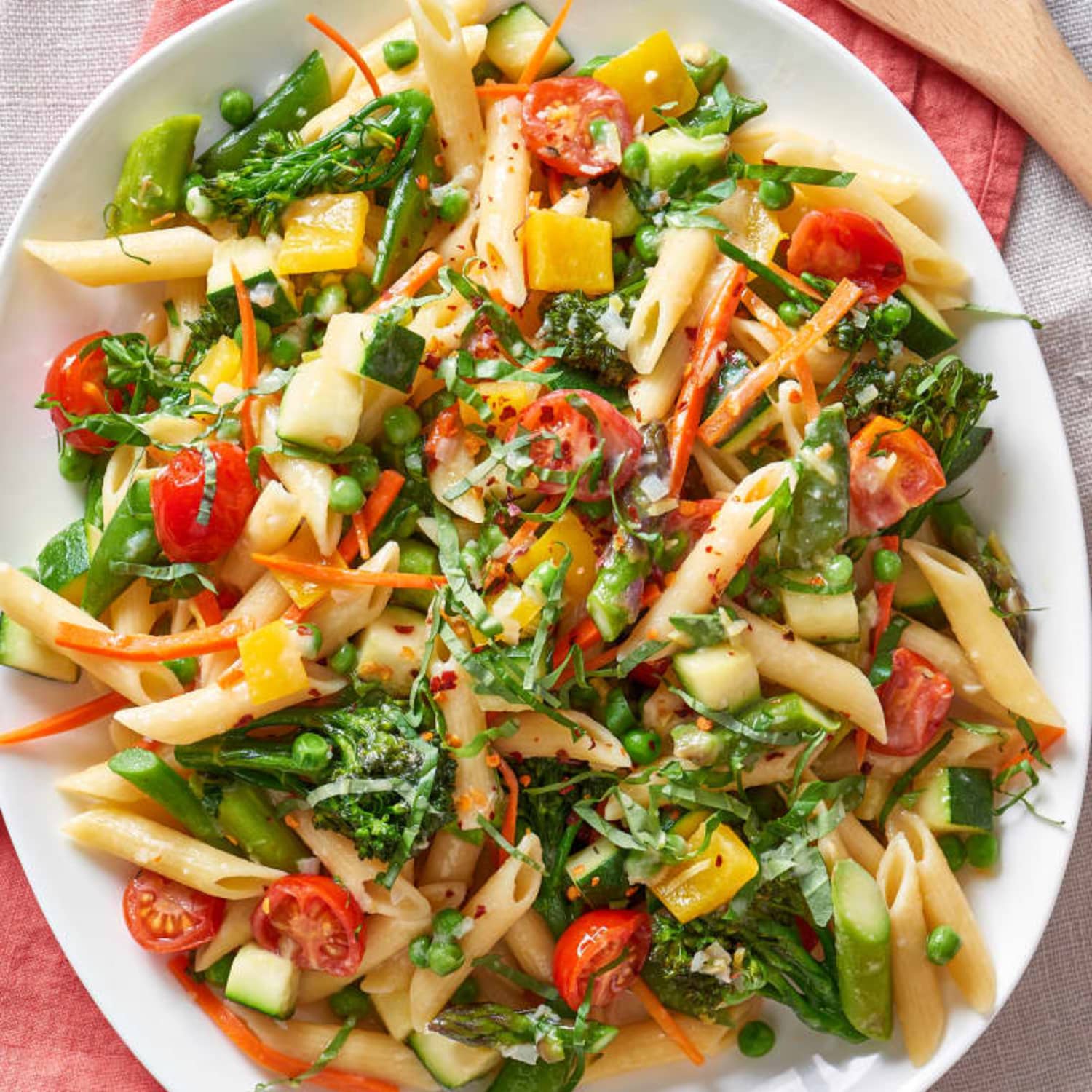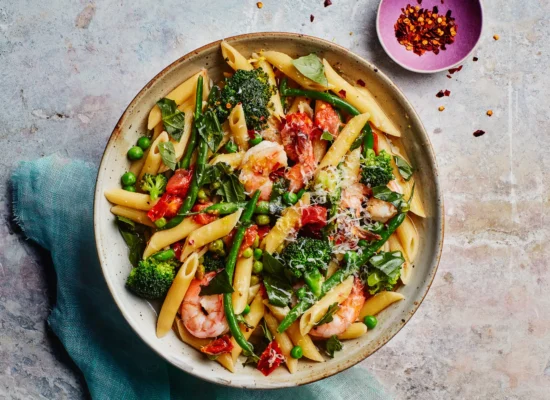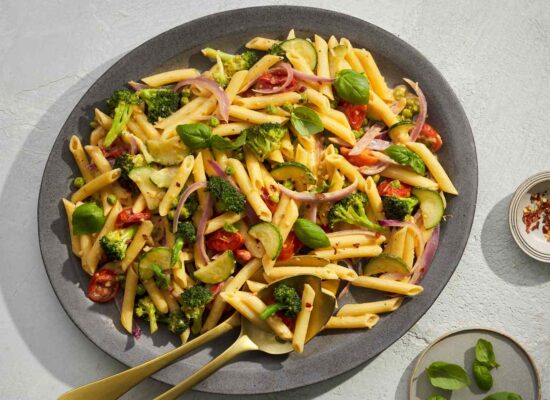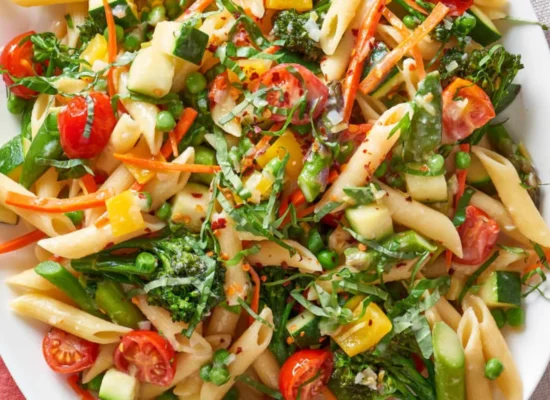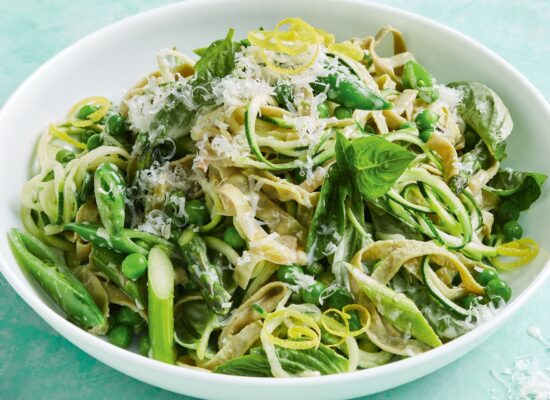Filet Mignon with Red Wine Sauce is an elegant and flavorful dish perfect for a special meal. Here’s how to prepare it at home for six people
Ingredients:
For the Steaks:
- 6 filet mignon steaks (6-8 oz each)
- Salt, to taste
- Freshly ground black pepper, to taste
- 3 tablespoons olive oil
- 3 tablespoons unsalted butter
- 6 cloves garlic, smashed
- 6 sprigs fresh thyme or rosemary
For the Red Wine Sauce:
- 1 tablespoon olive oil
- 1 small onion, finely chopped
- 2 cloves garlic, minced
- 2 cups red wine (choose a good quality wine you would drink)
- 1 cup beef broth
- 2 tablespoons balsamic vinegar
- 2 tablespoons unsalted butter, cold
- Salt and freshly ground black pepper, to taste
Instructions:
1. Prepare the Steaks:
- Season the Steaks: Pat the filet mignon steaks dry with paper towels. Season generously with salt and freshly ground black pepper on both sides.
- Heat the Skillet: Preheat your oven to 400°F (200°C). Heat a large ovenproof skillet over medium-high heat. Add the olive oil and swirl to coat the skillet.
- Sear the Steaks: Add the steaks to the skillet and sear for about 2-3 minutes on each side until a golden-brown crust forms.
- Add Butter and Herbs: Reduce the heat to medium. Add the butter, smashed garlic, and thyme or rosemary to the skillet. Baste the steaks with the melted butter for 1-2 minutes.
- Transfer to Oven: Transfer the skillet to the preheated oven and cook the steaks for about 5-7 minutes for medium-rare, or until they reach your desired level of doneness. Use a meat thermometer to check the temperature: 135°F (57°C) for medium-rare.
- Rest the Steaks: Transfer the steaks to a plate and cover loosely with foil. Let them rest for about 5 minutes.
2. Prepare the Red Wine Sauce:
- Sauté Onions and Garlic: In the same skillet (discard excess fat), add 1 tablespoon of olive oil and heat over medium heat. Add the chopped onion and cook until softened, about 3-4 minutes. Add the minced garlic and cook for another minute.
- Deglaze with Wine: Pour in the red wine and bring to a simmer, scraping up any browned bits from the bottom of the skillet. Let it simmer and reduce by half, about 10 minutes.
- Add Beef Broth and Vinegar: Add the beef broth and balsamic vinegar. Continue to simmer until the sauce is reduced by half again, about 10 minutes.
- Finish the Sauce: Remove from heat and whisk in the cold butter until the sauce is smooth and glossy. Season with salt and freshly ground black pepper to taste.
3. Serve:
- Plate the Steaks: Place the filet mignon steaks on plates and spoon the red wine sauce over the top.
- Garnish: Garnish with additional fresh herbs if desired.
Tips:
- Wine: Use a quality red wine that you enjoy drinking. Cabernet Sauvignon or Merlot works well.
- Temperature: Use a meat thermometer for perfect doneness. Medium-rare is 135°F, medium is 145°F.
- Resting: Resting the steaks allows the juices to redistribute, resulting in a more flavorful and juicy steak.
Enjoy your elegant and delicious Filet Mignon with Red Wine Sauce
